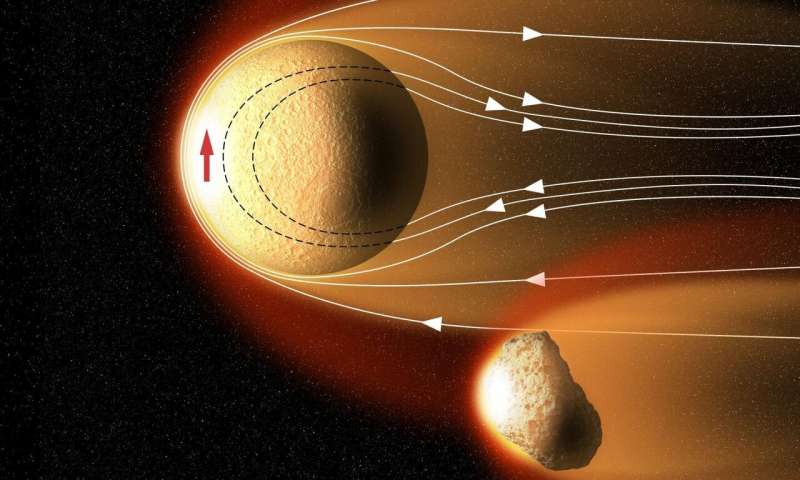HOME
Researchers uncover key clues about the solar system's history

Illustration of solar wind flowing over asteroids in the early solar system. The magnetic field of the solar wind (white line/arrows) magnetizes the asteroid (red arrow). Researchers at the University of Rochester used magnetism to determine, for the first time, when carbonaceous chondrite asteroids first arrived in the inner solar system. Credit: University of Rochester illustration / Michael Osadciw
In a new paper published in the journal Nature Communications Earth and Environment, researchers at the University of Rochester were able to use magnetism to determine, for the first time, when carbonaceous chondrite asteroids—asteroids that are rich in water and amino acids—first arrived in the inner solar system. The research provides data that helps inform scientists about the early origins of the solar system and why some planets, such as Earth, became habitable and were able to sustain conditions conducive for life, while other planets, such as Mars, did not.
The research also gives scientists data that can be applied to the discovery of new exoplanets.
"There is special interest in defining this history—in reference to the huge number of exoplanet discoveries—to deduce whether events might have been similar or different in exo-solar systems," says John Tarduno, the William R. Kenan, Jr., Professor in the Department of Earth and Environmental Sciences and dean of research for Arts, Sciences & Engineering at Rochester. "This is another component of the search for other habitable planets."
News Source